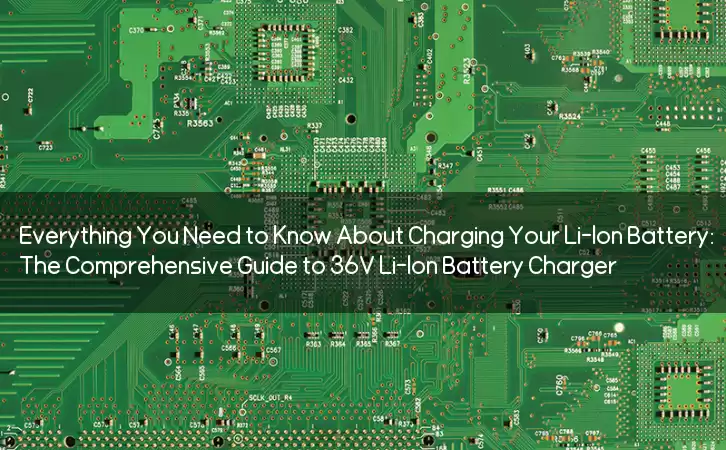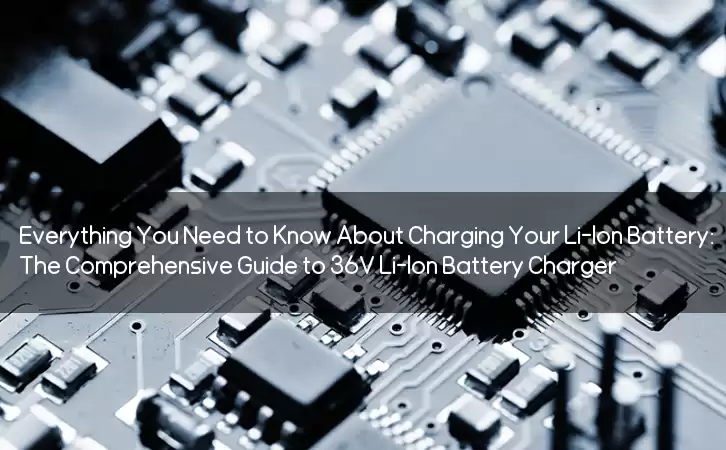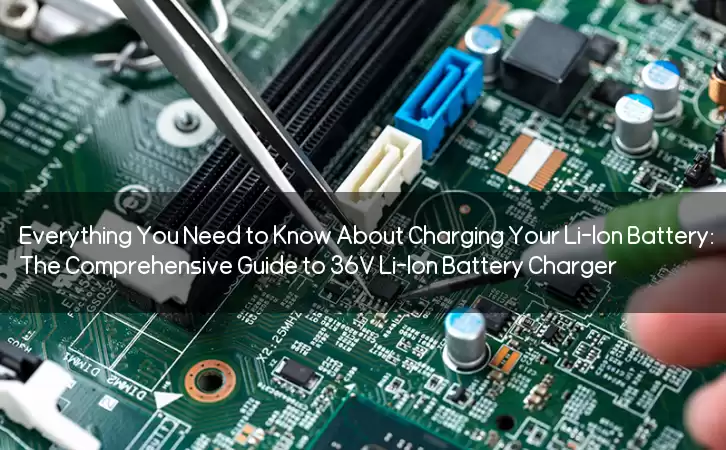Information Center
Everything You Need to Know About Charging Your Li-Ion Battery: The Comprehensive Guide to 36V Li-Ion Battery Charger
Published:2023-06-06 09:40:21 Author:Green WCND Views:71Charging Li-Ion Battery: A Comprehensive Guide

Li-Ion batteries have revolutionized the way we power our portable electronic devices. The demand for these batteries has grown significantly in recent years, and they are widely used in electric cars, power tools, and energy storage systems. One of the critical aspects of using Li-Ion batteries is charging, which can affect their performance and lifespan. In this article, we will explore the basics of Li-Ion battery charging and focus on the 36V Li-Ion battery charger.

Basic Working Principle of Li-Ion Batteries

Li-Ion batteries generate electrical energy by the movement of lithium ions between two electrodes; one positive and the other negative. When you charge the Li-Ion battery, its lithium ions move from the positive electrode to the negative electrode. In contrast, during discharging, the lithium ions move from the negative electrode to the positive electrode, generating electric current. The charging process involves applying an external electrical current to reverse the movement of lithium ions and store electric energy.
Understanding the Charging Parameters
Li-Ion batteries have a specific charging voltage and current range, and exceeding these limits can lead to premature battery failure, fire, or explosion. Therefore, it is essential to understand the charging parameters for your 36V Li-Ion battery charger. The charging parameters for Li-Ion batteries include:
- Charging Voltage: This is the maximum voltage that the battery can handle during charging. It is usually between 3.6V and 4.2V per cell. - Charging Current: This is the amount of current that flows into the battery during charging. It is essential to limit the charging current to prevent overcharging or overheating of the battery. - Charging Time: The charging time varies depending on the capacity of the battery and the charging current. Overcharging can reduce the battery’s lifespan, while undercharging can lead to poor performance.
Charging Methods for Li-Ion Batteries
There are two primary methods for charging Li-Ion batteries, which include:
- Constant Current/Constant Voltage (CC/CV) Charging: This is the most common method for Li-Ion battery charging. It involves charging the battery using a constant current until it reaches a specific voltage, then switching to constant voltage until the charging is complete. CC/CV charging ensures rapid charging while protecting the battery from overcharging or overheating.
- Trickle Charging: This method involves applying a low charging current to maintain the battery’s full charge. It is useful in situations where the battery is not in use for an extended period, preventing self-discharge.
36V Li-Ion Battery Charger
A 36V Li-Ion battery charger is specially designed to charge 36V Li-Ion batteries, which are commonly used in electric bikes, golf carts, and solar panel systems. The charging requirements for a 36V Li-Ion battery charger include a charging voltage range of 42V to 43.8V and a charging current range of 2A to 10A, depending on the battery capacity. It is essential to use a charger designed specifically for your battery to ensure optimal performance and lifespan.
In conclusion, Li-Ion batteries are a reliable and versatile energy storage solution that requires proper charging to maximize their potential. Understanding the charging parameters for your Li-Ion battery and using a reputable 36V Li-Ion battery charger can help prolong its lifespan and improve its performance.
Power Adapter Design and Customization Guide for Portable Electric KettlesI. Common Design Types for Portable Electric Kettle Power AdaptersPortable electric ke···
I. Common Design Types of Power Adapters External Independent Type (Most Common) Design: A standalone adapter (e.g., "black brick") connected to the p···
Handheld Vacuum Cleaner Power Adapter Selection GuideIntroductionHandheld vacuum cleaners have become a mainstream tool for household cleaning due to their port···
Drill Power Adapter Selection Guide.drill-container { font-family: Arial, sans-serif; line-height: 1.6; max-width: 800px; margin: 0 auto; padding: 20px; } .dril···





